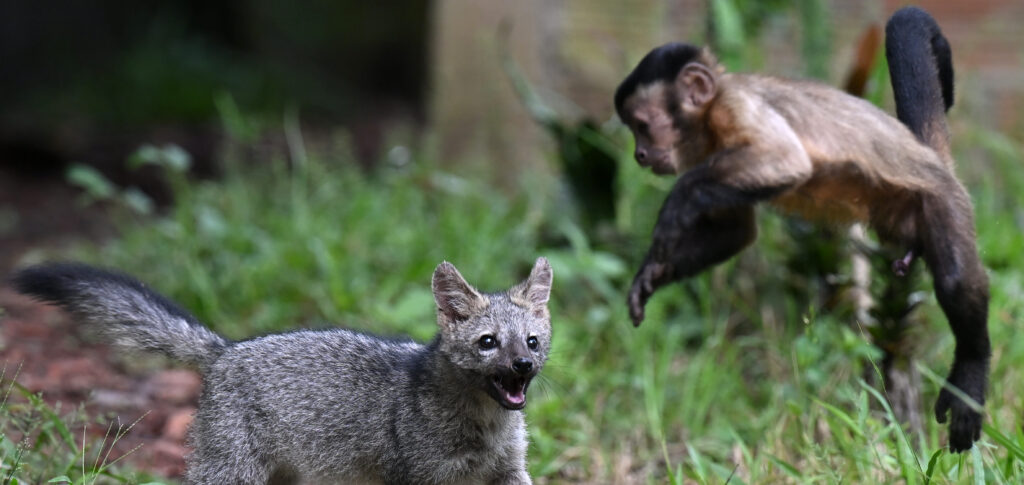A decade ago, they broke with the cattle ranching tradition of deforesting the jungle to transform it into pasture. They sold their cows and gave up their land in the rural area of San José de Guaviare. Today they are allies of the local government to rehabilitate the fauna and have around 60 recovering animals under their care, from armadillos to an ocelot.
ADVERTISING
Among the trees, there is the family house and comfortable separate cages for different species of birds and primates. There is also the shed where the aggressive Ulamá, a large, black ferret, is isolated.
“When we arrived there wasn’t even a single worm. The ground was completely broken,” agroforestry engineer Dora Sánchez, who heads the La Ñupana Reserve, tells AFP.
"Experiment"
Most of the animals were seized from people who had them as pets or were trying to sell them. Others, like jaguars, are collateral victims of deforestation in a region that will lose 25 thousand hectares of forest in 2021.
ADVERTISING
Like many of the inhabitants of the department of Guaviare, the Zapatas traveled there from the center of the country, attracted by the promessa “a land without men for men without land”.
In 1997, most of the settlers were dedicated to raising cattle or cultivating coca leaves, activities carried out on the devastated forest.
Sánchez, 48, began planting native trees in pastures as an “experiment” in conservation. In 2012, “we said: no more livestock farming! Let’s go through the forest, let’s go through the trees”, she remembers.
ADVERTISING
Today it has 40 hectares of jungle and tourists visit its ecological trail. Some even “adopt” an animal and contribute money monthly towards its upkeep.
Man vs. feline
Samantha Zapata, Dora's daughter, feels a mixture of happiness and sadness as she bottle-feeds her two-week-old cougar.
Like most of the animals in the reserve, the puppies were rescued by CDA, the local environmental authority. A peasant from a neighboring municipality found them abandoned in the forest “with the umbilical cord, eyes still closed (…) and covered in ants and leaves”, reports Adolfo Bravo, the organization's veterinarian.
ADVERTISING
Residents of the region told the CDA that neighbors are hunting felines because they devour their sheep. “It is assumed that [the mother died] due to illegal hunting”, details Bravo.
Dora Sánchez blames the colonization of the jungle: “People began to expand the agricultural frontier, to invade the felines’ territory (…). What does the feline do? He goes out to the extremes to hunt and then they kill them.”
After being taken by helicopter to San José, the jaguars are now fed with a formula that imitates mother's milk. “At 4-5 months, we will start giving them meat (…) and live prey, so that they learn to hunt and can develop naturally”, explains Zapata.
ADVERTISING
However, they are not always able to return the animals to the forest. “There are some that cannot be released, they have gone through a very long domestication process,” he says.
Zapata hopes that this is not the jaguars' fate. “I hope they are not sadly condemned to live in a cage”, hopes this 23-year-old agronomy student.
Read also




